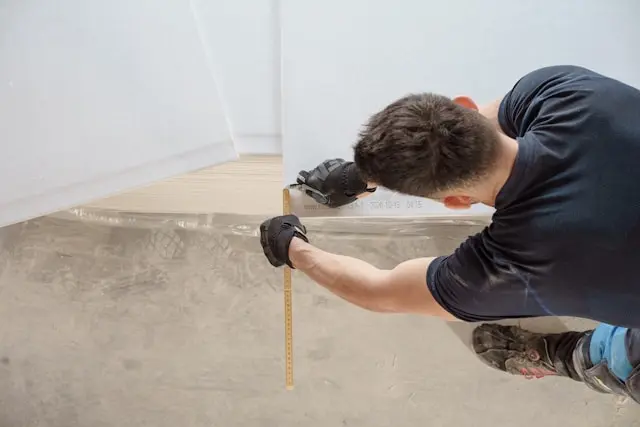What Is Benign Prostatic Hyperplasia (BPH)?
Benign Prostatic Hyperplasia, commonly referred to as BPH, is a non-cancerous enlargement of the prostate gland that affects a significant proportion of men, particularly as they enter their later years. With an enlarged prostate, individuals often experience a range of urinary symptoms, such as a persistent urge to urinate, a weak or interrupted urinary stream, and nocturia, which involves waking up at night to urinate. The condition can lead to complications like urinary retention and kidney damage if not addressed. The profound influence on a man’s quality of life warrants a critical look at the various treatment modalities that are available today.
The Evolution of BPH Treatment Options
As our understanding of BPH has deepened over the years, so too has the array of treatment options broadened. From medications designed to shrink the prostate or relax the bladder to invasive surgical procedures aimed at removing excess tissue, the journey through potential BPH treatments can be daunting. However, innovations in medical technologies have catalyzed the development of minimally invasive procedures. These cutting-edge options, such as the UroLift system, sidestep many of the drawbacks associated with traditional surgery, offering relief to patients with lower risks and a quicker return to daily activities.
Benefits of Minimally Invasive Procedures
The shift toward minimally invasive procedures has brought about a transformation in how BPH is treated. Unlike conventional surgeries that may be associated with significant postoperative pain and lengthy recovery, minimally invasive options typically result in significantly less discomfort and enable a swift return to normalcy. These treatments also maintain a crucial advantage in preserving sexual function, which is an area of particular concern for many men considering BPH surgery. Personalized treatment plans play a vital role in achieving successful outcomes and must take into account each patient’s health history, symptomatology, and lifestyle needs.
A Closer Look at UroLift: A Minimally Invasive Option
The UroLift system represents a significant breakthrough in minimally invasive BPH treatments. Implementing a straightforward mechanism where small implants are used to retract the enlarged prostate tissue, this procedure makes way for unobstructed urination without the need to remove tissue or employ heat-based treatments. Patients who are best suited for UroLift are those who prioritize minimal downtime, are concerned with preserving their sexual function, and have not yet found relief through medications. Clinical evaluations and patient testimonials consistently emphasize the efficacy and safety profile of UroLift, making it a compelling choice for eligible patients seeking a less invasive intervention.
Real-Life Patient Outcomes and Success Stories
Anecdotal evidence and empirical data both underscore the positive impact minimally invasive procedures like UroLift can have on those struggling with BPH. According to published research, many patients report substantial improvement in urinary symptoms and overall quality of life post-procedure. Success stories are not hard to find, with numerous accounts from men who have experienced a dramatic decrease in urinary discomfort, an increase in flow rate, and a return to a more normal urination pattern following treatment. These narratives not only inspire confidence in potential candidates but also help in painting a realistic picture of what to expect from the procedure.
The Cost-Effectiveness of Minimally Invasive BPH Treatments
When considering any medical procedure, cost is an inevitable factor. Minimally invasive BPH treatments are generally cost-effective, mainly due to the reduced need for hospitalization and the quick return to one’s professional life. Insurance coverage plays a significant role in accessibility, with many providers now recognizing the long-term affordability of minimally invasive approaches when compared to traditional surgery, not to mention the associated benefits of improved quality of life. When weighing the options, patients must conduct thorough research and consultations to understand the prospective financial implications fully.
Preparing for a Minimally Invasive BPH Procedure
Preparation for a minimally invasive procedure begins with a thorough understanding of the process. Prospective candidates need to engage in detailed discussions with their urologist to grasp the nature of the treatment, the preparation required, and the recovery process. Clear communication regarding current medications, health conditions, and lifestyle factors is vital to avoid complications and to ensure optimal results. Patients should also be well informed about what to expect during the procedure itself, which typically includes local anesthesia and a brief hospital stay, followed by postoperative instructions that encourage a smooth and efficient recovery.
When to Consult with a Urologist
The initial onset of symptoms indicative of BPH should prompt the decision to seek medical advice. It’s crucial not to dismiss or normalize urinary difficulties, as early consultation with a urologist can lead to more effective management of the condition. In preparing for a consultation, it is beneficial to come equipped with a comprehensive list of symptoms, any relevant personal or family medical history, and questions or concerns. For those seeking more information on finding a urologist or on BPH itself, resources like the Urology Care Foundation offer valuable insights and guidance on navigating these waters.
Future Innovations in BPH Treatment
The landscape of BPH treatment is continuously evolving, with research and innovation leading the charge. Emerging treatments and refinements to existing procedures are consistently under study, aiming to elevate patient outcomes and satisfaction. An understanding of both the current options and potential future advancements empowers patients and clinicians to make informed decisions and remain at the forefront of BPH management. With ongoing clinical trials and the potential for breakthrough therapies, there is a vista of promise for individuals dealing with the condition.
Making an Informed Decision About BPH Treatment
The journey towards choosing the proper BPH treatment is highly personalized and should be navigated with comprehensive information. Considering the pros and cons of each treatment option in consultation with healthcare providers will steer patients toward the most appropriate choice for their situation. The overarching aim is not just the amelioration of symptoms but also the preservation of the individual’s overall well-being and lifestyle. A patient-centric approach that incorporates a clear understanding of the risks, benefits, and alternatives remains the cornerstone of effective BPH treatment planning.



